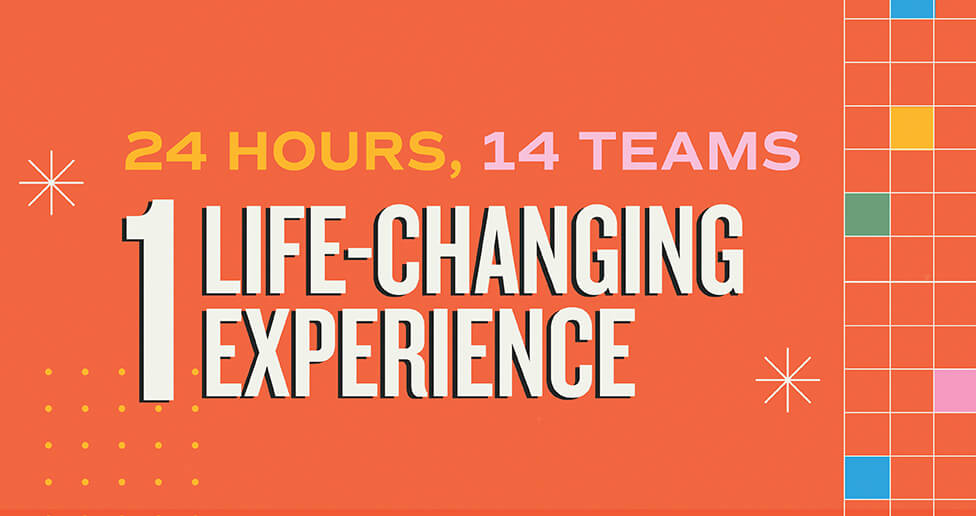
Why SEO is crucial for higher education
You’ve invested a lot of time and money into your marketing. You’ve launched a brand-new website. You’re on social media and you have marketing collateral that you’re proud of. Yet, your volume of website visitors seems to be a bit lackluster and the traffic you do get doesn’t seem to be converting into inquiries for your school.
If this sounds familiar, don’t worry. This is a common situation that a lot of higher ed institutions are facing nowadays—they know they need a website and engaging marketing collaterals, but are having trouble getting the engagement and numbers they’d like to see on their website.
The good news is that while it’s a common problem, it’s also one that can be solved. The solution? Great search engine optimization (SEO).
What is SEO?
At its core, SEO is the practice of ensuring your website is friendly for both users and search engines alike. This allows you to show up for relevant queries in the search results (like in Google, Yahoo! or Bing) and attract visitors to your site.
The main idea behind SEO isn’t just to bring organic traffic to your website though; it’s also to engage and convert those visitors once they arrive on your site. That’s why a good SEO team won’t just promise you more traffic, they’ll help you generate that traffic strategically so that it moves the needle for your school by turning traffic into students.
Why SEO is important for your college or university
Today, 70% of education website visitors are referred by a search engine and 1-in-3 students use video to research schools. (YouTube is actually the second largest search engine!) Additionally, four in five consumers conduct localized searches (e.g. “nursing schools near me” or “mba degrees in kansas city”) in order to find a business or school near them.
What these stats mean is that your potential students are on search engines, and if your school’s website isn’t showing up, you run the risk of not only missing out on generating highly qualified student inquiries for your institution (in general, organic leads have a 14.6% close rate, compared to a 1.7% rate from “outbound” sources like print advertising and direct mail), but you also risk losing that traffic to your competitors who may be showing up for those same terms.
Therefore, the more you can drive quality, targeted organic traffic to your higher education website, then the higher chance you have to reach more potential students where they’re at online and generate qualified leads that ultimately help increase enrollment rates.
The fundamentals of SEO
The discipline of SEO is a complex web, made up of more than 200 ranking factors, or activities, that can help your site rank better within the search engine results pages (SERPs).
That said, we like to break those 200 ranking factors down into four essential categories of optimization: Content, Usability, Technical, and Off-Page. Understanding these SEO basics can help you improve your school’s organic performance in the search engines.
Content
Today, content is the backbone of SEO, as Google clearly favors sites with unique and quality content over those that don’t invest in fresh content. In fact, some would argue that you can’t really do SEO anymore without content! Content can come in many different forms, including blog posts and articles, infographics, videos, eBooks, web pages and more.
The key is to have a content strategy that pulls all of your content and related assets together for a cohesive look and feel, and consistent messaging so that your audience remains engaged and fulfilled by what you have to say and offer. Of course you’ll also want to make sure keyword research is performed and that those key terms are integrated into all content; this helps to ensure that not only are you producing great pieces for your school, but that they’re able to be found by your target audience, as well.
Usability
One of Google’s main goals is to create a web that is user-friendly across all different types of devices. That’s why user experience (UX) and optimizing for mobile are so important to SEO; if your website isn’t user-friendly and mobile-friendly, you are going to have a difficult time getting your institution’s website to rank for relevant queries that can bring in that quality traffic.
So, ensuring that your website follows UX best practices is crucial to having good SEO. Some practices to consider are ensuring that your main navigation is easy to use, that your site and pages load quickly, that there is interlinking between internal pages so that users can easily find related topics, and that there are contact forms and call-to-actions throughout the site to help visitors get ahold of your school and desired content.
Technical
As with all disciplines, there are certain standards that need to be met in order to qualify for the “next level” benefits. Take social media for example. You aren’t going to be able to get very far with your Facebook strategy if you don’t have the basics in place like a profile picture, cover photo, or the “About” section filled out. SEO is the same way. Even with great usability and content, you still may not get very far if your website isn’t structurally sound. So, make sure you work to analyze and optimize elements like your site’s meta data, URL structure, page load times, page redirects, technical documents like the xml sitemap and robots.txt files, and coding syntax to ensure that you’re passing search engines’ technical requirements with flying colors.
Off-page SEO
So far we have discussed what are called “on-page” tactics; those activities that are done on your own website. However, there are “off-page” factors that are just as important and should be addressed as part of an ongoing SEO strategy.
Off-page tactics include things like ensuring there is a social media presence for your brand, generating links from other websites pointing to your school’s site (aka “link building”), and optimizing your local listings profiles so that you show up for localized key terms such as “best colleges near me” or “grad schools in kansas city”.
These practices are part of creating and maintaining your overall digital footprint, and are looked at by Google as indications of your brand’s online trustworthiness, site quality and thought leadership within the industry. Ultimately, all of these off-page tactics can help to improve your domain authority and lead to improved rankings and increased site traffic.
How to measure the ROI of SEO

As with any marketing tactic, being able to measure the ROI of your SEO efforts is critical to your continued marketing success. As we discussed before, in higher education you don’t just measure the effectiveness of SEO campaigns by the number of visitors you bring to your website; you also measure it by the number of inquiries (or leads) that your site is able to generate from those organic visitors.
There are so many different ways to measure the effectiveness of an SEO campaign (and other digital efforts, too), and what you’re looking at can vary based on the analytics platforms available to you (these can range from simple visitor metrics in Google Analytics, to more sophisticated tracking through specific ranking and heat map software). In general though, some metrics to keep an eye on when measuring SEO for higher education are:
- Number of Organic Visitors to Your Site
- Check this compared to the previous month and the previous year, as there is often a large seasonal component for higher education and a month-over-month dip from August to September may be natural, while a year-over-year dip may not.
- Site Engagement Metrics
- While bounce rate, time on site and average pages per session can be somewhat subjective depending on the page you’re analyzing (a blog post may have a higher bounce rate merely because students are reading an article then leaving, but that isn’t always a negative thing), they are still good starting points to measure how engaged a visitor might be with your website, content and school.
- Sharing statistics can also be a powerful way to measure engagement with your content and brand, as social shares equate to more “social proof”, which can lead to more brand affinity, authority and credibility. Social engagement can also have an influence on SEO and your site’s ability to rank, so it’s important to consider sharing and social media engagement as a part of your overall strategy.
- Lead Generation
- Another aspect of site engagement is, of course, lead generation, or how many visitors are willing to exchange contact information for either a piece of “gated” content or more information about your school. You can define an inquiry however you see fit; sometimes this may be scheduling a visit, sometimes it may be filling out a quick contact form for more program info, or it could be inputting an email address in exchange for a school viewbook. Whatever the inquiry, just be sure to apply appropriate tracking so you can monitor these important events on your site.
- As you continue with your campaign, you should look to be able to identify what your visitor-to-inquiry conversion rate is, as well as your inquiry-to-conversion rate is. These two metrics are key to being able to effectively track and quantify ROI for your SEO and website efforts.
- Organic Rankings
- Rankings are still a valuable way to measure relative SEO success, but we do mention this metric with a grain of salt. Up until about 2014, the focus of SEO had primarily been on rankings. The problem is, while rankings can be a good indication of search performance and the relative success of your SEO campaign, it only tells one part of the story in that just because you are now ranking #3 for a term you previously ranked #10 for, doesn’t necessarily mean you are getting more “butts in seats” for that.Additionally, due to the increased personalization of the web (where nearly every single person sees slightly different search results based on various factors like their location, search history, preferences and brands they engage with most), it is hard to say that a term you’re ranking #1 for in one search engine for one person, is the same term you’re ranking #1 for in another.Therefore, it’s important to watch the needle move on rankings for primary key terms, but the focus should also go beyond that, as “better rankings” do not always equal “more students”.
- Movement on Your Overall Marketing Goals and Objectives
- Remember, SEO is just another arm to your overall marketing strategy. As such, it should be analyzed against your overarching brand goals and objectives so that you can truly understand if it’s helping you to move the needle, or what might need to be adjusted to improve upon current strategies.
- For instance, if a fiscal goal is to increase the number of students enrolling in continuing education courses, then you should be focusing on measuring activities that help support that goal, such as visitors to your “continuing education” pages, inquiries generating from those specific continuing education pages, and the engagement of visitors who fall within your continuing education cohort (a group of people with similar characteristics).
- Remember, SEO is just another arm to your overall marketing strategy. As such, it should be analyzed against your overarching brand goals and objectives so that you can truly understand if it’s helping you to move the needle, or what might need to be adjusted to improve upon current strategies.
Overall, with the right strategy, SEO can be a great complement to your current online marketing efforts. It can help drive more traffic to your website, ensure that your website is optimized for users and search engines alike, and it works hard to generate measurable ROI (in the form of inquiries and engagement) that ladders up to the overall goals and objectives of your school or institution.
If you’d like to learn more about SEO for higher education websites, we’d love to talk to you. Learn more about our SEO services, or give us a call today.
Subscribe to our newsletter
Get our insights and perspectives delivered to your inbox.


